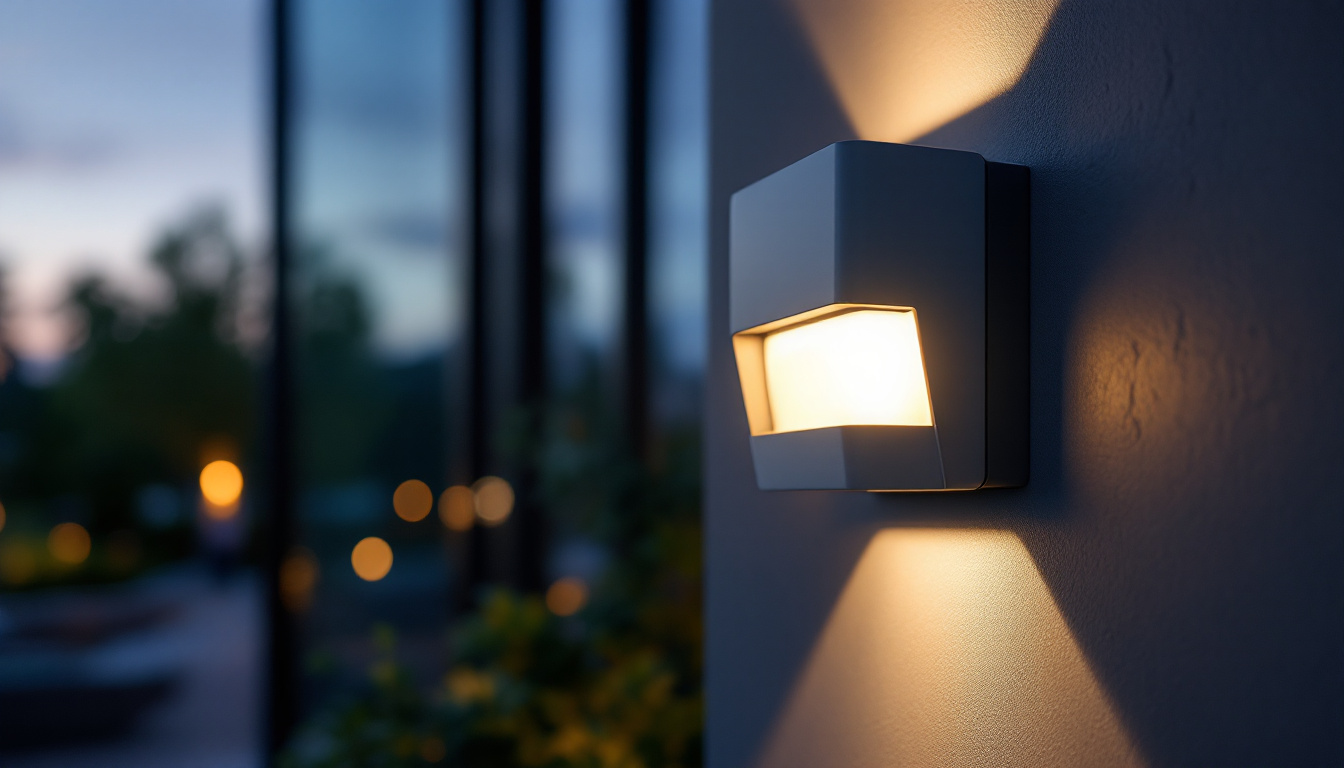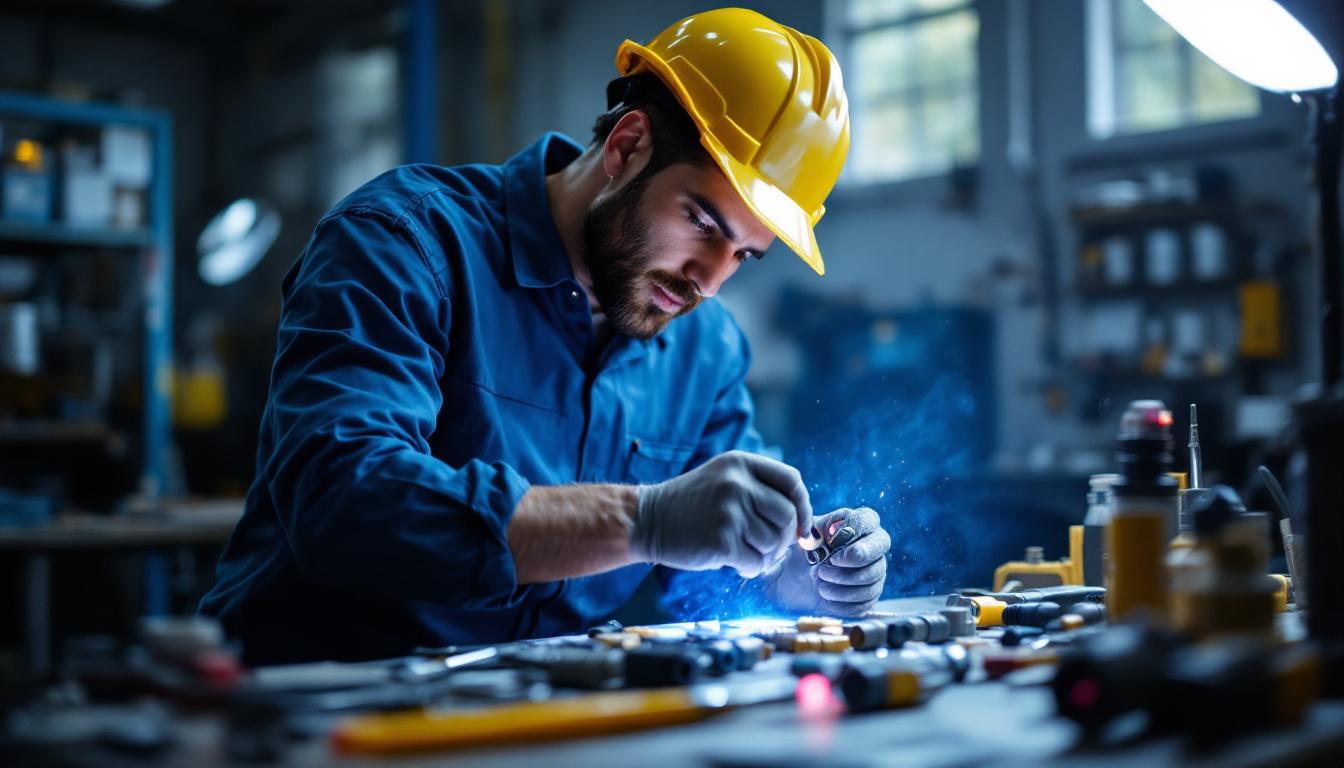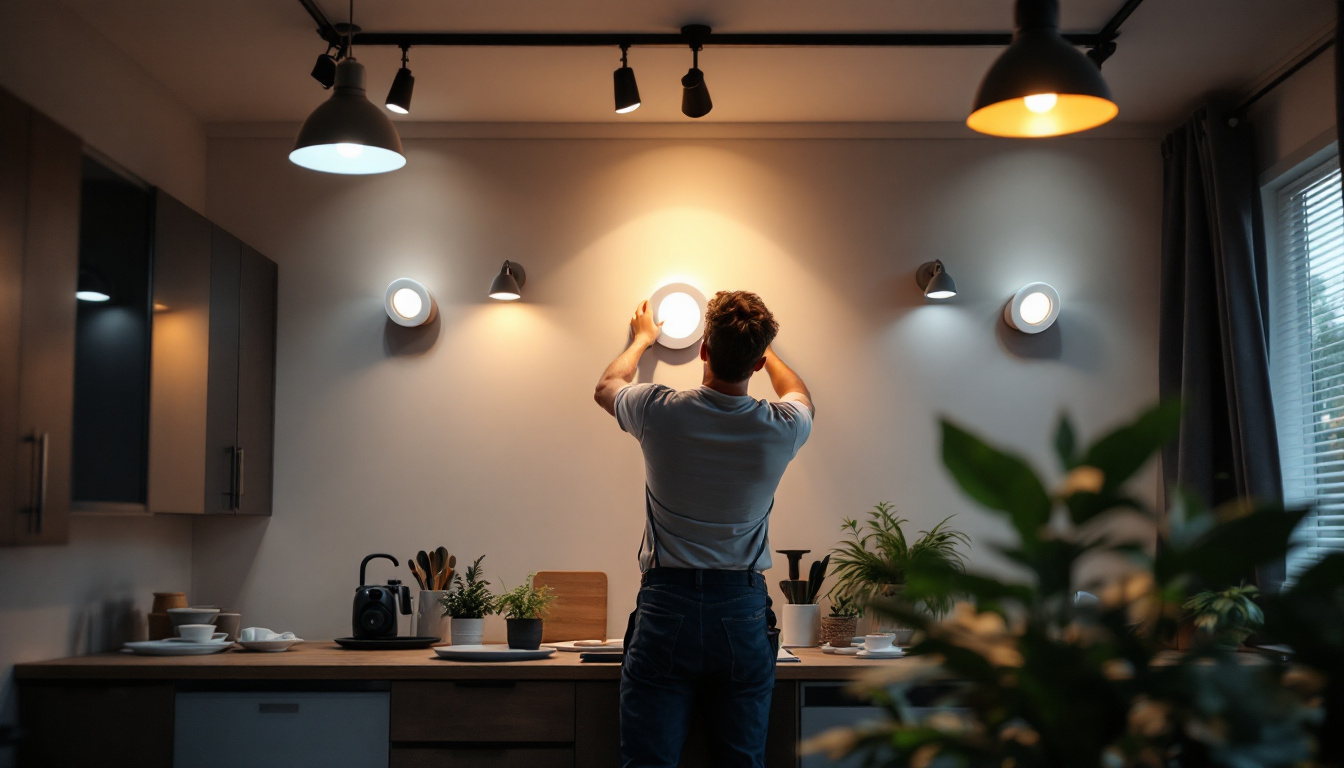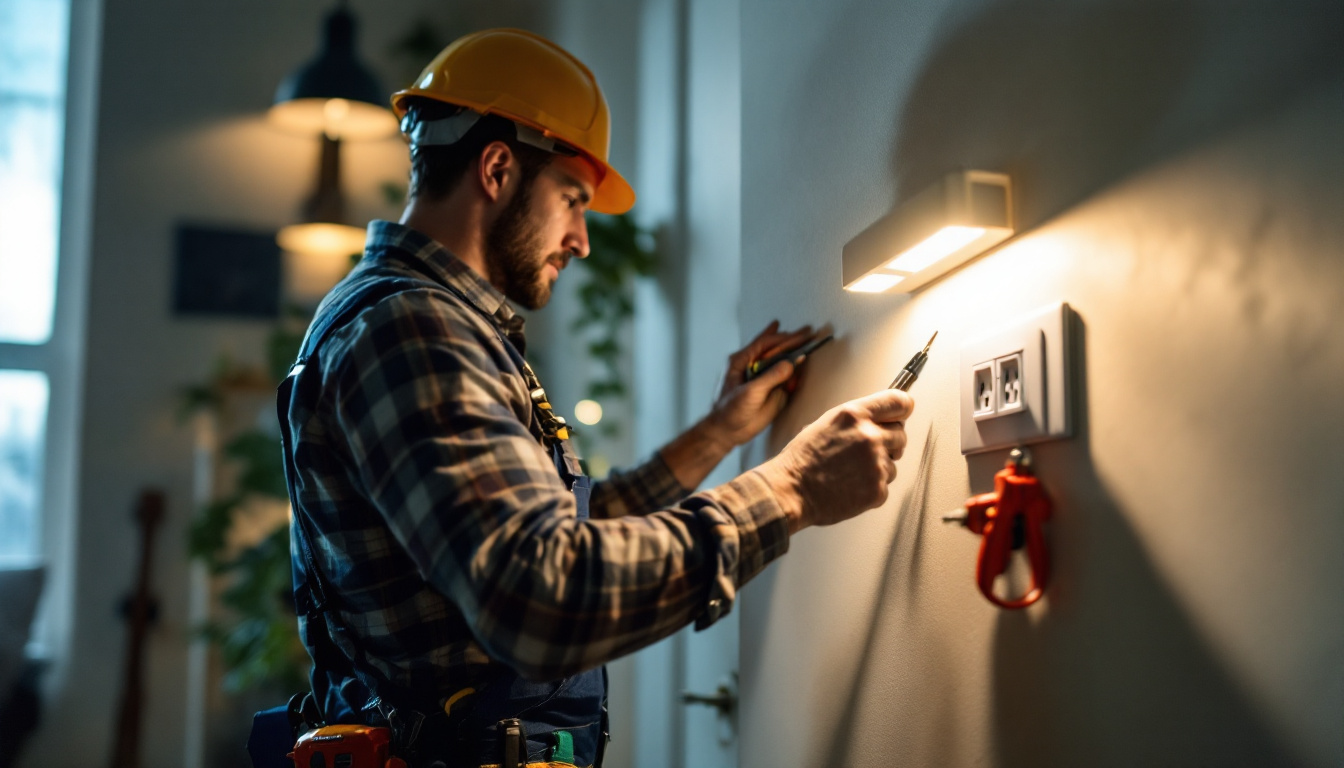
In the ever-evolving world of lighting, wallpack fixtures have emerged as a vital component for both commercial and residential applications. These versatile lighting solutions have undergone significant transformations over the years, adapting to the needs of modern infrastructure while enhancing energy efficiency and aesthetic appeal. This article delves into the evolution of wallpack lighting, exploring its history, technological advancements, and the impact on the industry.
Wallpack lighting fixtures have roots that trace back to the early days of electrical lighting. Initially, these fixtures were designed primarily for functionality, providing essential illumination for outdoor spaces such as parking lots, building exteriors, and walkways. The early models often utilized incandescent bulbs, which, while effective, had limitations in terms of energy efficiency and lifespan. These fixtures were typically bulky and not particularly aesthetically pleasing, but their primary purpose was to ensure safety and visibility in public and commercial areas during nighttime hours.
As the demand for more efficient lighting solutions grew, manufacturers began to innovate. The introduction of fluorescent technology marked a significant turning point, allowing wallpack fixtures to produce brighter light while consuming less energy. This shift not only reduced operational costs but also contributed to a growing awareness of environmental sustainability. Additionally, the evolution of wallpack designs began to incorporate more streamlined shapes and finishes, making them more visually appealing and suitable for a wider range of architectural styles. As urban development increased, the need for effective outdoor lighting became even more critical, leading to the widespread adoption of these fixtures in city planning and infrastructure development.
With the advent of LED technology, wallpack lighting experienced a revolutionary change. LEDs offered unparalleled energy efficiency, longevity, and versatility. Unlike traditional incandescent and fluorescent bulbs, LEDs have a significantly longer lifespan, often exceeding 25,000 hours. This longevity translates to reduced maintenance costs and less frequent replacements, making them a preferred choice for contractors and property owners alike. Furthermore, the compact size of LED components allows for more innovative fixture designs, enabling manufacturers to create wallpacks that blend seamlessly into various environments without sacrificing performance.
Moreover, LEDs provide a range of color temperatures, allowing for greater customization in lighting design. Whether a warm glow is desired for a residential setting or a cooler, brighter light for commercial spaces, LEDs can meet diverse aesthetic and functional needs. This adaptability has solidified the role of wallpack fixtures in various applications, from security lighting to architectural illumination. In addition, the ability to integrate smart technology with LED wallpacks has opened up new possibilities for energy management, allowing users to control lighting remotely and optimize usage based on real-time needs.
As energy costs continue to rise and environmental concerns become more pressing, the lighting industry has prioritized energy efficiency. Wallpack fixtures equipped with LED technology consume significantly less power than their predecessors, contributing to lower energy bills and reduced carbon footprints. This shift aligns with global sustainability goals, encouraging contractors to consider eco-friendly options in their projects. The increasing emphasis on green building certifications, such as LEED, has further propelled the adoption of energy-efficient lighting solutions, making wallpacks an integral part of sustainable design practices.
In addition to energy savings, many modern wallpack fixtures are designed with recyclable materials, further minimizing their environmental impact. The integration of smart technology, such as motion sensors and dimming capabilities, allows for even greater energy savings by ensuring that lights are only used when necessary. This evolution in wallpack design not only meets regulatory standards but also appeals to environmentally conscious consumers. As cities strive to reduce their overall energy consumption and enhance public safety, the role of wallpack lighting continues to expand, making it a vital component in the quest for smarter, more sustainable urban environments.
The evolution of wallpack lighting has been significantly influenced by technological advancements. Today’s fixtures are not only more energy-efficient but also smarter and more versatile than ever before. The integration of smart technology has transformed how wallpack fixtures operate, offering enhanced control and customization options.
Smart wallpack fixtures are equipped with advanced sensors and connectivity features that allow for remote monitoring and control. These systems can be integrated into larger building automation frameworks, enabling contractors to manage lighting more efficiently. For instance, occupancy sensors can automatically turn lights on or off based on the presence of individuals in a space, further optimizing energy use.
Additionally, many smart wallpack fixtures can be programmed to adjust brightness levels based on ambient light conditions. This capability not only enhances user comfort but also contributes to energy conservation. As smart technology continues to evolve, the potential for wallpack fixtures to integrate with other smart devices will expand, creating a more cohesive and efficient lighting ecosystem.
Modern wallpack fixtures are not just functional; they are also designed with aesthetics in mind. Manufacturers have recognized the importance of visual appeal in lighting design, leading to a diverse range of styles, finishes, and sizes. Whether it’s a sleek, contemporary look or a more traditional design, there are wallpack options to fit any architectural style.
Furthermore, the ability to customize the light output and color temperature allows for creative applications in various settings. For instance, a warm white light can create an inviting atmosphere for residential properties, while a cooler, brighter light may be more suitable for commercial spaces requiring enhanced visibility. This flexibility in design and functionality makes wallpack fixtures a popular choice among contractors and property developers.
One of the primary functions of wallpack lighting is to enhance safety and security in outdoor environments. Well-lit areas deter criminal activity and provide a sense of security for individuals navigating through dark spaces. As such, wallpack fixtures play a crucial role in creating safe environments for both residential and commercial properties.
Properly installed wallpack lighting significantly improves visibility in areas such as parking lots, building entrances, and walkways. By illuminating these spaces, wallpack fixtures help reduce the risk of accidents and injuries, particularly during nighttime hours. The strategic placement of wallpacks can create a well-lit pathway, guiding individuals safely to their destinations.
Moreover, the use of high-lumen output LED wallpacks ensures that even the darkest corners are adequately illuminated. This not only enhances safety but also increases the overall aesthetic appeal of a property, making it more inviting and accessible. Contractors are increasingly recognizing the importance of incorporating effective lighting solutions into their designs to promote safety and security.
Criminal activity is often deterred by the presence of adequate lighting. Well-lit areas are less attractive to potential wrongdoers, as they increase the likelihood of being seen. Wallpack fixtures positioned strategically around a property can create a sense of surveillance, making it less appealing for criminal behavior.
In addition to traditional lighting, the integration of smart technology into wallpack fixtures can further enhance security measures. For example, motion-activated lights can provide an additional layer of protection by illuminating areas only when movement is detected. This not only conserves energy but also heightens security by drawing attention to any unusual activity.
The lighting industry is continuously evolving, and wallpack fixtures are no exception. As technology advances and consumer preferences shift, several trends are emerging that will shape the future of wallpack lighting.
The Internet of Things (IoT) is set to revolutionize the way wallpack fixtures operate. By connecting lighting systems to the internet, contractors can monitor and control lighting remotely, gaining valuable insights into energy consumption and performance. This data-driven approach allows for more informed decision-making regarding maintenance and upgrades.
IoT-enabled wallpack fixtures can also communicate with other smart devices, creating a cohesive lighting network that enhances overall efficiency. For example, a smart wallpack could adjust its brightness based on data received from weather sensors, ensuring optimal illumination regardless of external conditions. This level of integration will not only improve energy efficiency but also enhance user experience.
As consumers become more design-conscious, the demand for aesthetically pleasing lighting solutions will continue to grow. Manufacturers are likely to respond by offering a wider range of customizable options for wallpack fixtures, including various finishes, shapes, and sizes. This trend will empower contractors to select fixtures that align with the overall design vision of their projects.
Additionally, the ability to customize light output and color temperature will remain a priority. As more property owners seek to create unique atmospheres, wallpack fixtures that offer flexibility in lighting design will be highly sought after. This focus on aesthetics will further solidify the role of wallpack lighting in both residential and commercial applications.
The evolution of wallpack lighting reflects broader trends in the lighting industry, driven by technological advancements, energy efficiency, and aesthetic considerations. As wallpack fixtures continue to adapt to the changing needs of contractors and property owners, they will play an increasingly vital role in enhancing safety, security, and sustainability.
With the integration of smart technology and a focus on design, wallpack lighting is poised to remain a staple in outdoor illumination. As the industry progresses, contractors will benefit from staying informed about the latest innovations and trends, ensuring they can provide the best lighting solutions for their clients.
Ultimately, the future of wallpack lighting is bright, offering exciting possibilities for enhancing both functionality and design in outdoor spaces. By embracing these advancements, contractors can elevate their projects and contribute to a more sustainable and aesthetically pleasing built environment.
Ready to embrace the future of wallpack lighting and elevate your projects to new heights? At LumenWholesale, we provide contractors with the cutting-edge, spec-grade lighting solutions you need at unbeatable wholesale prices. Say goodbye to inflated markups and hello to a vast selection of top-quality lighting that meets the highest industry standards. With free shipping on bulk orders, LumenWholesale is your go-to source for premium lighting without hidden fees or compromises. Enhance the safety, security, and aesthetic appeal of your outdoor spaces today. Wholesale Lighting at the Best Value is just a click away.

Discover the ultimate guide to selecting the perfect plug for washers, tailored specifically for lighting professionals.

Discover effective strategies for lighting contractors to tackle the challenges posed by humidistat switches.

Explore the diverse world of pot lights with our comprehensive guide tailored for lighting contractors.

Discover essential tips and techniques for lighting contractors to master electrical wall outlet installations.